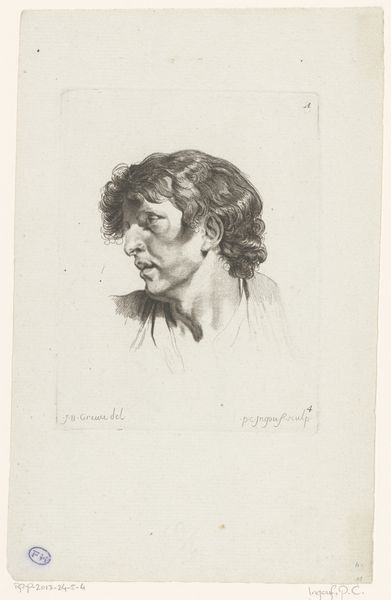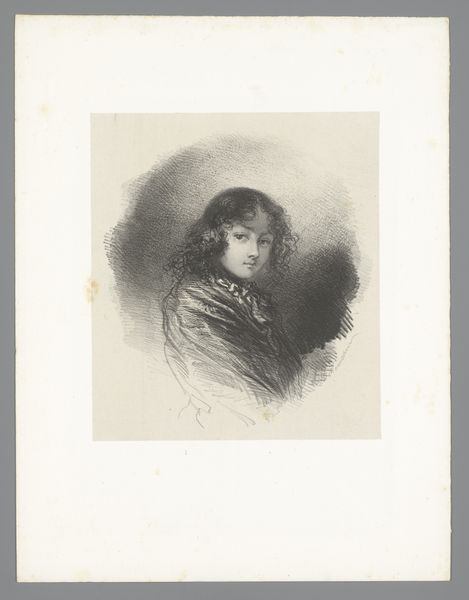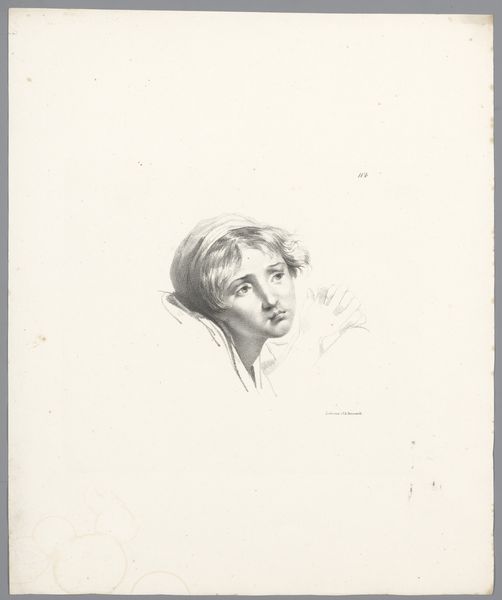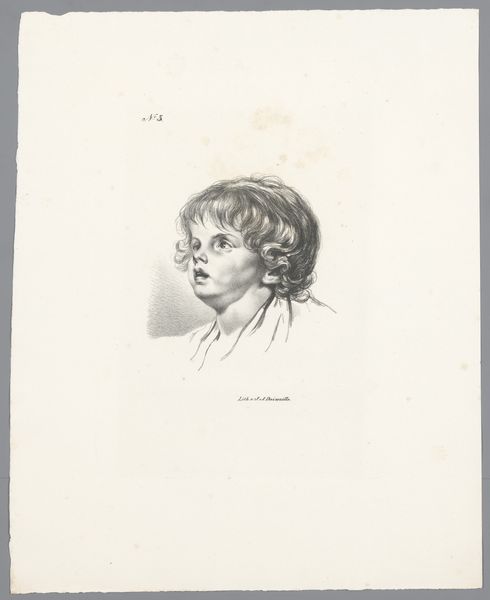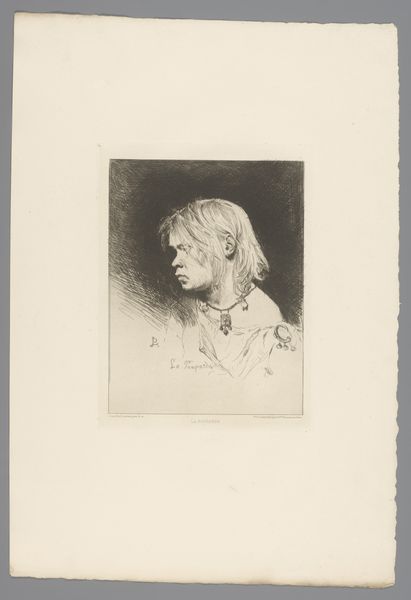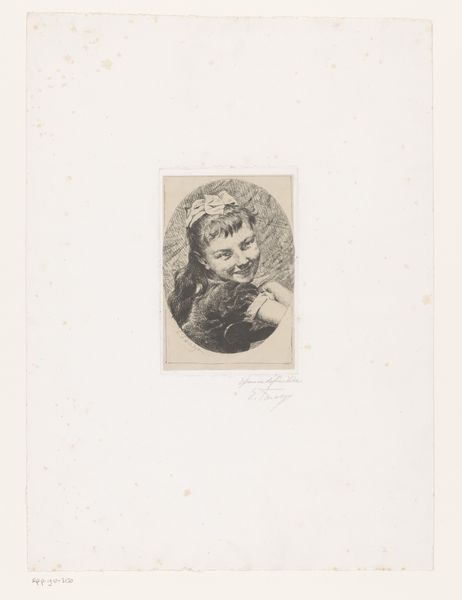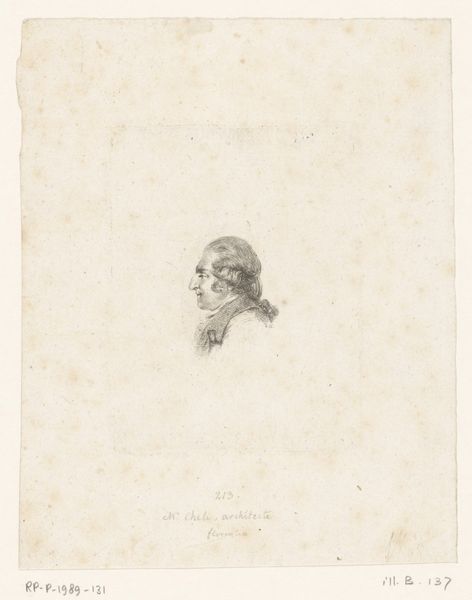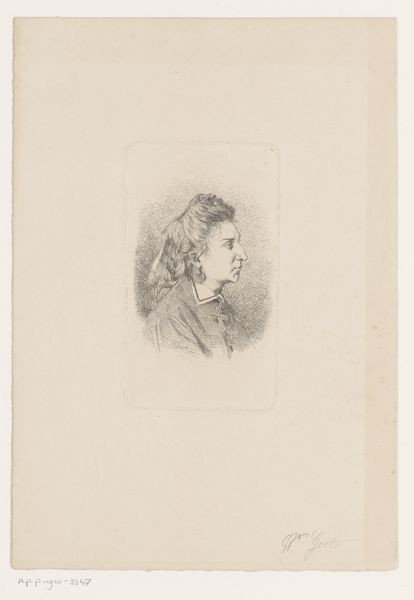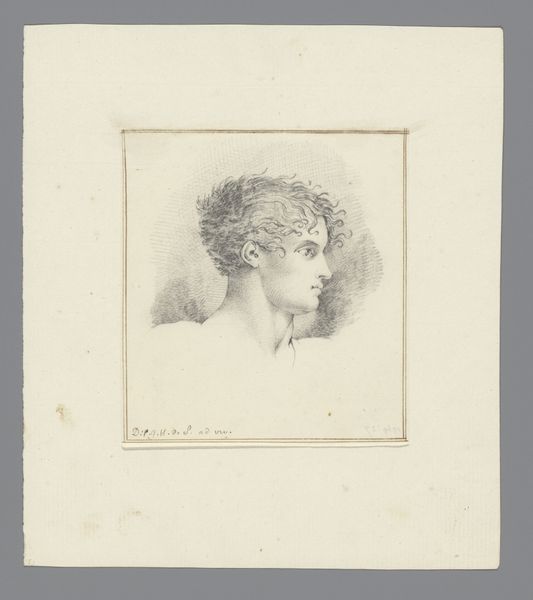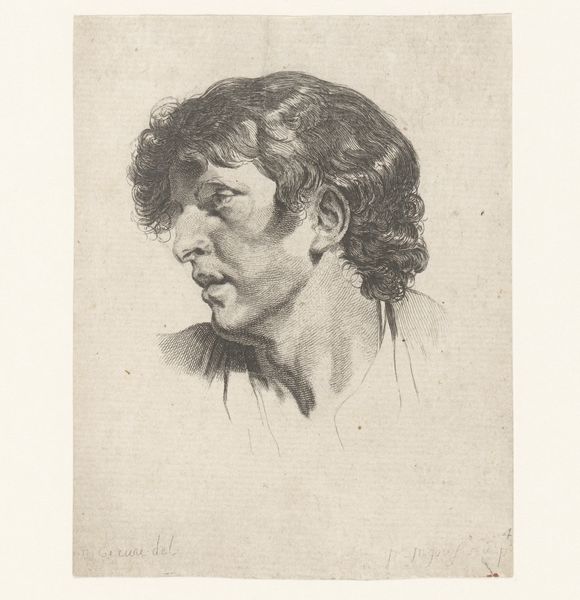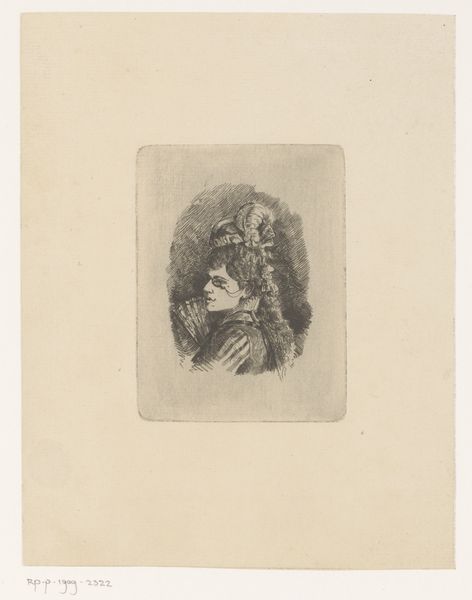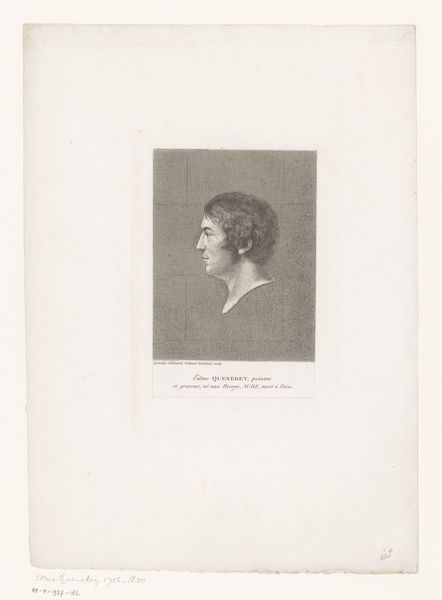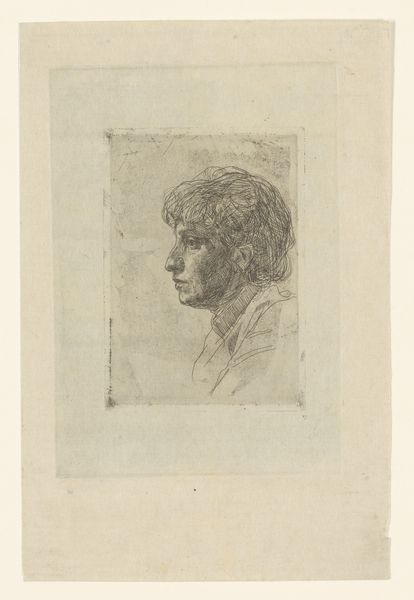
drawing, pencil
#
portrait
#
drawing
#
pencil sketch
#
pencil
#
academic-art
#
realism
Dimensions: height 305 mm, width 240 mm
Copyright: Rijks Museum: Open Domain
Curator: Here we have Jean Augustin Daiwaille's "Head of a Man," a pencil drawing dating from about 1820 to 1830, here at the Rijksmuseum. Editor: My first thought? It's haunting. The way the artist captured the intensity in his eyes, despite the simplicity of the medium. It feels almost...unfinished, like a fleeting thought captured on paper. Curator: Absolutely, and that sense of immediacy aligns with artistic practices of the time. These academic sketches were a popular way to work out a study or test a composition. The prevalence of pencil as a medium speaks volumes about shifting artistic trends toward preparatory works being increasingly appreciated as pieces of art in themselves. Editor: Pencil...it's so intimate, isn't it? You can see every stroke, every decision. The way the shadows play around his cheekbone...there’s something vulnerable about it, raw even, as if the man's soul were barely contained by the paper. Does it remind you of neoclassical sculptures? Curator: Indeed, the realism is striking. Consider that Academic art sought to return to classical ideals, and that such styles held immense cultural sway; what seems a mere portrait is as much an aesthetic statement on ideal manhood, one embedded within an established system. The slight upward gaze perhaps hints at the sitter's ambition or a more profound inner contemplation, perhaps? Editor: Or maybe he's just spotted a particularly interesting cloud. But, more seriously, I see your point. It is powerful how much a gaze can evoke. Looking at art is like overhearing a whisper of thoughts and feeling from across time. What’s truly timeless? The shared experience of existence as seen by an artist in a portrait that both speaks volumes and retains something eternally unknowable. Curator: Precisely! The pencil itself bears traces of political context, of a burgeoning middle class acquiring both access to the materials and the artistic skill for expression. And the fact that it resides in the Rijksmuseum frames it as a touchstone for Dutch identity. Editor: Who knew a simple sketch could carry so much history on its slender graphite shoulders? Thanks to art institutions that gather art into collections, this "Head of a Man," keeps nodding, if only slightly, from one century into the next, asking each viewer in turn, "Who do you see?"
Comments
No comments
Be the first to comment and join the conversation on the ultimate creative platform.
